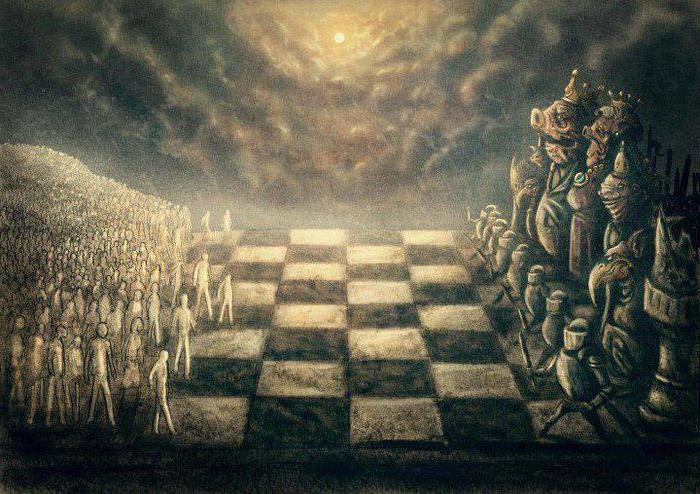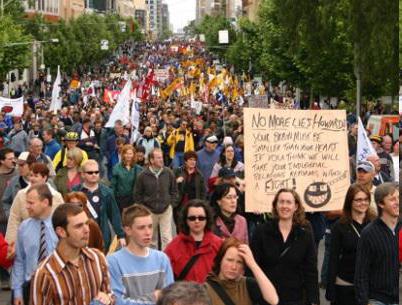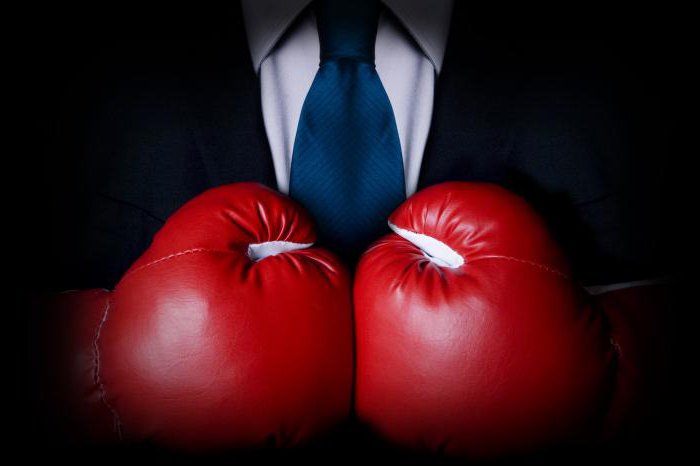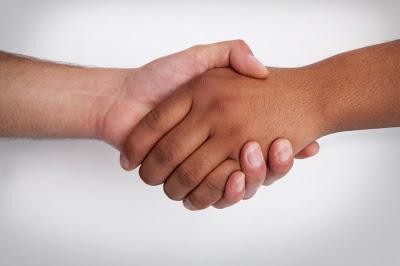Sociology defines social conflict as the highest form of contradiction in society. In everyday consciousness, conflict is a phenomenon that should be avoided. However, scientists find in it many positive functions. The specificity and social role of the conflict are the subject of in-depth research and reflection by scientists.

The concept
Conflictology defines social conflict as the highest point of clash of interests between members and groups of society. The history of social conflicts goes back centuries. Already the first communities of people defended their interests in opposing each other. Defining the essence of this phenomenon, thinkers have different approaches to its definition. So, according to K. Marx, the social conflict is the antagonism of classes, which inevitably ends with a revolution.
Lewis Coser, an American sociologist, believes that social conflict is an interaction of opponents that takes the form of a struggle for values, power, resources using various methods of causing various damage to his opponent.
German sociologist Ralph Derendorf says that social conflict is a clash of social groups of varying degrees of intensity and manifestation, and class struggle is just one of its types. Thus, an understanding of social conflict always includes ideas about confrontation for something. The degree of severity may be different, but there is always a confrontation in it.

Causes of conflict
A social conflict is a frequent phenomenon, and it can be associated with many reasons. The society is a sphere of permanent conflict of interests of different parties, and the diversity of these interests becomes the source of such many causes of confrontation. You can imagine the most common causes of social conflicts as follows:
- Interests and beliefs. Worldviews, dominant values, human preferences - all this can cause social conflicts. Clash of views, religious beliefs, production interests can provoke confrontations of different strengths. We see how today ethnic and religious differences can lead to armed upholding of their views. Contradictions in norms and values can cause very strong emotions in people. Psychological attitudes, stereotypes, an ingrained worldview - all this is perceived by a person as part of his personality, therefore, an encroachment on them causes aggression and negativity. Conflicts of economic, cultural, political interests can also cause confrontation.
- Needs. Ways to meet the needs of groups of some people can cause resistance in others. For example, satisfying food, shelter, and security needs can threaten the needs of others for the same. Thus, the migration of population groups from war-ravaged territories to prosperous countries risks undermining the well-being of the inhabitants of these places. All of the above leads to social conflicts.
- Disorganization of society. Social and economic inequality, the struggle of ideologies, the presence of unemployment, orphanhood, the severity of the political struggle, inequality of opportunity - all this very often becomes a source of social tension, which translates into conflicts.

Theories of Social Conflict
The essence and causes of social conflicts are investigated by sociologists, psychologists, and philosophers.As a result, several basic approaches to understanding the nature of this phenomenon appear.
The socio-biological theory of social conflict is based on the postulates of C. Darwin on evolution and understands conflict as a natural mechanism for the struggle for survival. This point of view was held by G. Spencer, W. Sumner. They believed that conflict was inevitable until a balance was reached between the interests and needs of all people, which, in principle, is utopian.
The psychological approach believes that conflict is in the nature of human behavior. Modern society violates the individual interests of the individual, and this leads to conflict. Conflict is an instrument for defending a person’s rights to his expectations and satisfaction of needs.
Marxist theory proceeds from materialistic views and believes that conflict is the result of class inequality, and it is due to class struggle. When a balance of interests is found between all members of society, the confrontation will disappear. The cause of the conflict, according to K. Marx, G. Marcuse, R. Michels, is the inequality of living and working conditions, as well as the hereditary transfer of privileges and unequal starting opportunities.
Dialectical theories, today recognized as the most realistic and progressive, proceed from the fact that the social system is unstable, and this variability leads to conflicts. Researchers L. Coser, R. Darendorf, C. Boulding acknowledge that the conflict not only has destructive consequences, but also is a productive mechanism for the development of society. They believe that social conflict is omnipresent, it is the result of competition, but it can be overcome. The whole history of mankind, according to R. Darendorf, is a series of confrontations, from which society always leaves others.
Today, in sociology, two main approaches to the study of conflict coexist: the first explores its structure and types, the second focuses on finding ways to avoid confrontations and explores the realm of peace and harmony.

Kinds
The variety of causes of conflicts leads to the emergence of a large number of classifications of this phenomenon. Traditionally, researchers identify such grounds for typologization and types of social conflicts:
- In the areas of flow. Determining the area of development of the described phenomenon makes it possible to distinguish a socio-psychological conflict, socio-political, socio-economic and national-ethnic.
- By duration. In this case, short-term and long-term conflicts are highlighted.
- By frequency: one-time and repeated.
- By the impact on the development of society: progressive and regressive.
- By type of relationship. There are conflicts between social groups - intergroup and intragroup, between peoples - interethnic, between states - interstate, between state coalitions - global.
- By the intensity of the course. There are acute, protracted, latent or latent conflicts.
Of greatest interest to researchers is the study of conflicts in various fields, since each of them gives rise to a special type of confrontation.

Public and socio-political conflicts
The political sphere often provokes social conflicts in society. Traditionally, these types of confrontations are associated with the fact that power often intervenes in other spheres of people's lives, power structures can act as mediators between different groups in order to level the conflict.
There are such varieties of confrontations in the political sphere:
- Between the branches of power. Conflicting situations sometimes arise between warring factions over the struggle for power.
- Between the institutions of power.The government, parliaments, and senate often come into conflict with each other, this sometimes leads to the resignation of senior officials in the government or the dissolution of parliament, but more often the conflicts are smoothed out so that they can re-emerge.
- Between parties and political movements. The struggle for voters, for the opportunity to form a government always leads to intense competition between parties.
- Between the links of the executive branch. Often there is a conflict of interest between individual structural units of power, which also provokes a confrontation.
The public is not always a participant in such conflicts, more often it is assigned only the role of an observer. But in legal states, people have the ability to influence the resolution of a controversial situation.

Economic conflicts
The sphere of production, entrepreneurship and finance is one of the most controversial. Here, competition is not only not hidden, but even cultivated, and it is always a direct path to confrontation. Socio-economic conflicts often occur in the area of collision between welfare systems and labor.
Uneven income distribution is always a source of social tension and in the potential for conflict. Also, economic conflicts can exist among labor collectives, trade unions, and government. Worker representatives may confront the government under unfair legislation. So, at the beginning of the 20th century, such conflicts led to the widespread establishment of an 8-hour working day. But most often disputes arise between various economic agents. They can protect their property, the right to conduct business, to cover new market segments. The clash of property and commercial interests can cause conflicts that are resolved legally or transferred to the interpersonal level.
Functions
According to its consequences, a social conflict can be destructive or constructive. He is able to benefit society or have a devastating effect on him. The constructive functions of social conflict include:
- Development function. K. Marx also wrote that as a result of conflicts, society carries out evolutionary development.
- Discharge function. The conflict situation allows the parties to express their claims and relieve tension; this helps later find rational constructive solutions to the problem.
- The function of establishing equilibrium. Conflicts contribute to achieving a balance between different groups.
- Axiological function. Conflicts contribute to the reassessment of existing and the establishment of new norms and values.
- Integrative function. During the conflict, groups of people can express their opinions, find like-minded people and unite with them.
Destructive functions include:
- reduced collaboration between social communities;
- increased hostility in society;
- dissatisfaction of the population with life;
- the escalation of hostility, which can lead to open clashes.

Structure of social conflict
Any conflict necessarily has two warring parties that represent different interests. Conflicts of social groups traditionally have the following structure:
- The participants. These are two or more social groups, each of which has its own views and interests. They may be direct and indirect, to varying degrees, interested in the outcome of the confrontation.
- Thing. The main issue that is causing the debate.
- An object. Any conflict has an object, which can be property, power, resources, spiritual achievements: norms, ideas, values.
- Wednesday. Usually emit macro and microenvironment of social conflict. This is the whole context in which the confrontation is formed and proceeds, this includes the social groups and institutions surrounding the participants, strategies and tactics of their behavior, interests and expectations.
Flow stages
In any confrontation, three stages are usually distinguished; the development of social conflicts is not an exception. The first stage is pre-conflict. The tension and the accumulation of contradictions gradually increase, usually at first there are minor frictions and disagreements, which gradually increase and intensify. At this stage, the parties weigh their resources, assess the possible consequences of an open confrontation. There is an accumulation of forces, the consolidation of supporters, the development of a strategy of behavior. This stage can last a very long time and proceed in a muffled form.
The second step is the conflict itself. Usually the trigger of this stage is some kind of action, after which the parties proceed to an open attack. Emotional emotional and rational conflict management.
The third step is conflict resolution. At this stage, events occur that should end with the end of the confrontation. The solution is possible only if the problem situation changes, otherwise the dispute becomes protracted and it becomes more difficult to settle it.
Conflict Resolution Techniques
There are several methods that lead to the end of the confrontation and the solution of the problem. Among the main distinguish compromise. In this case, the resolution of social conflicts occurs through the agreement of the parties and finding a solution that suits everyone. At the same time, everyone makes certain concessions and there is a certain third position with which the conflicting agree.
Consensus is another method of conflict resolution, which is to negotiate and find a solution that satisfies both parties. Usually it is achieved on the part of the issues, while others are simply removed from the agenda, because the parties are satisfied with what has been achieved.
Restoration is a solution method that involves returning to positions that the parties had before entering into conflict.






